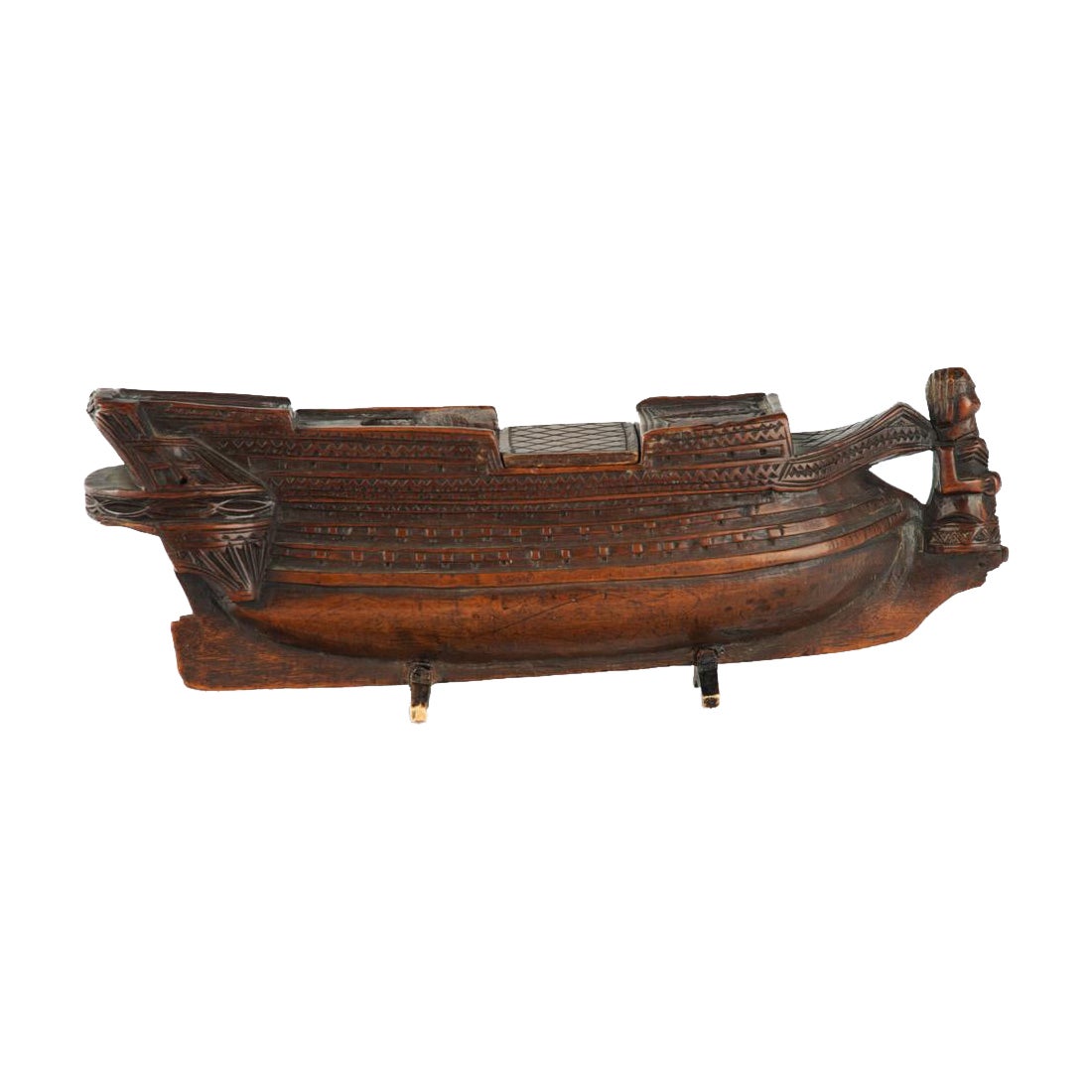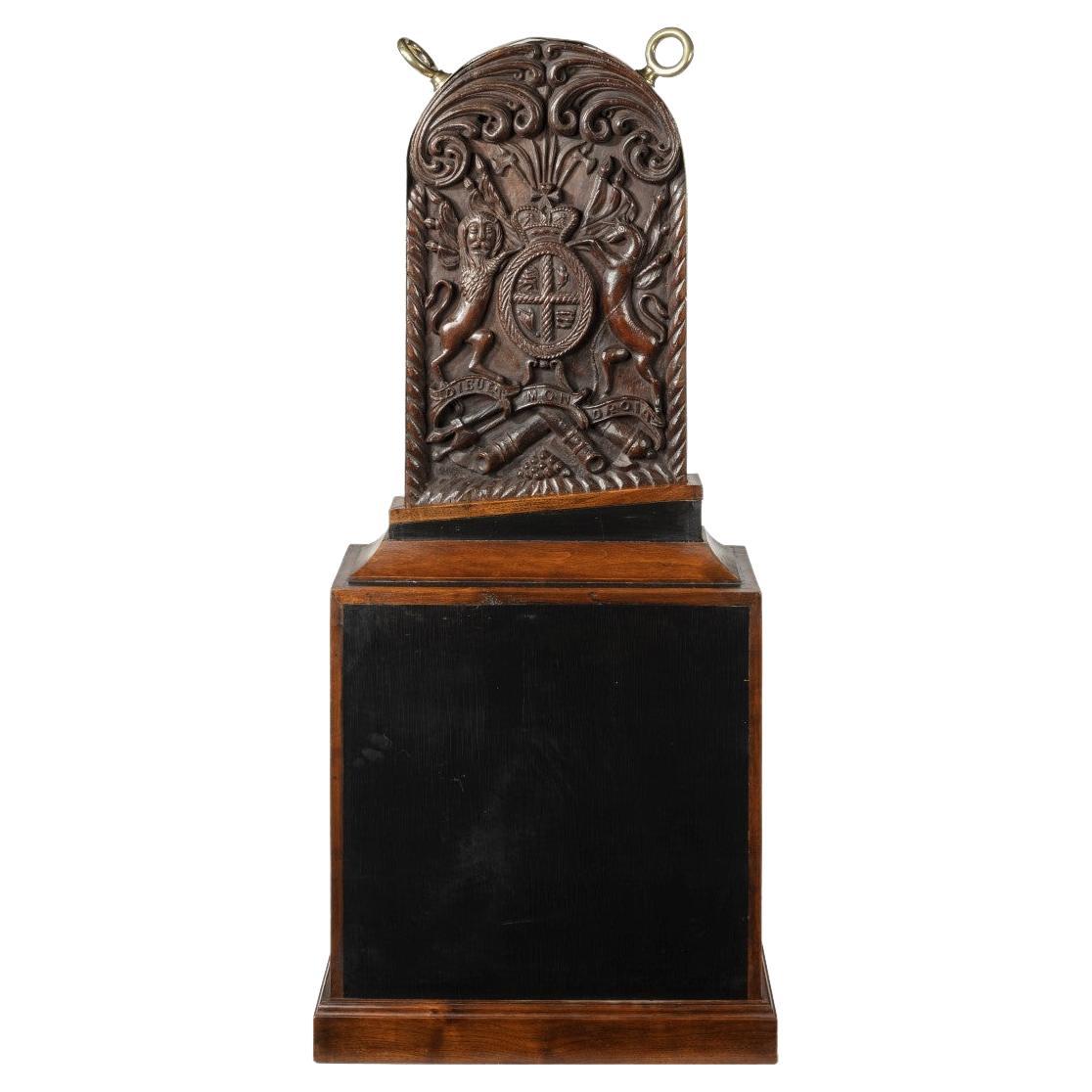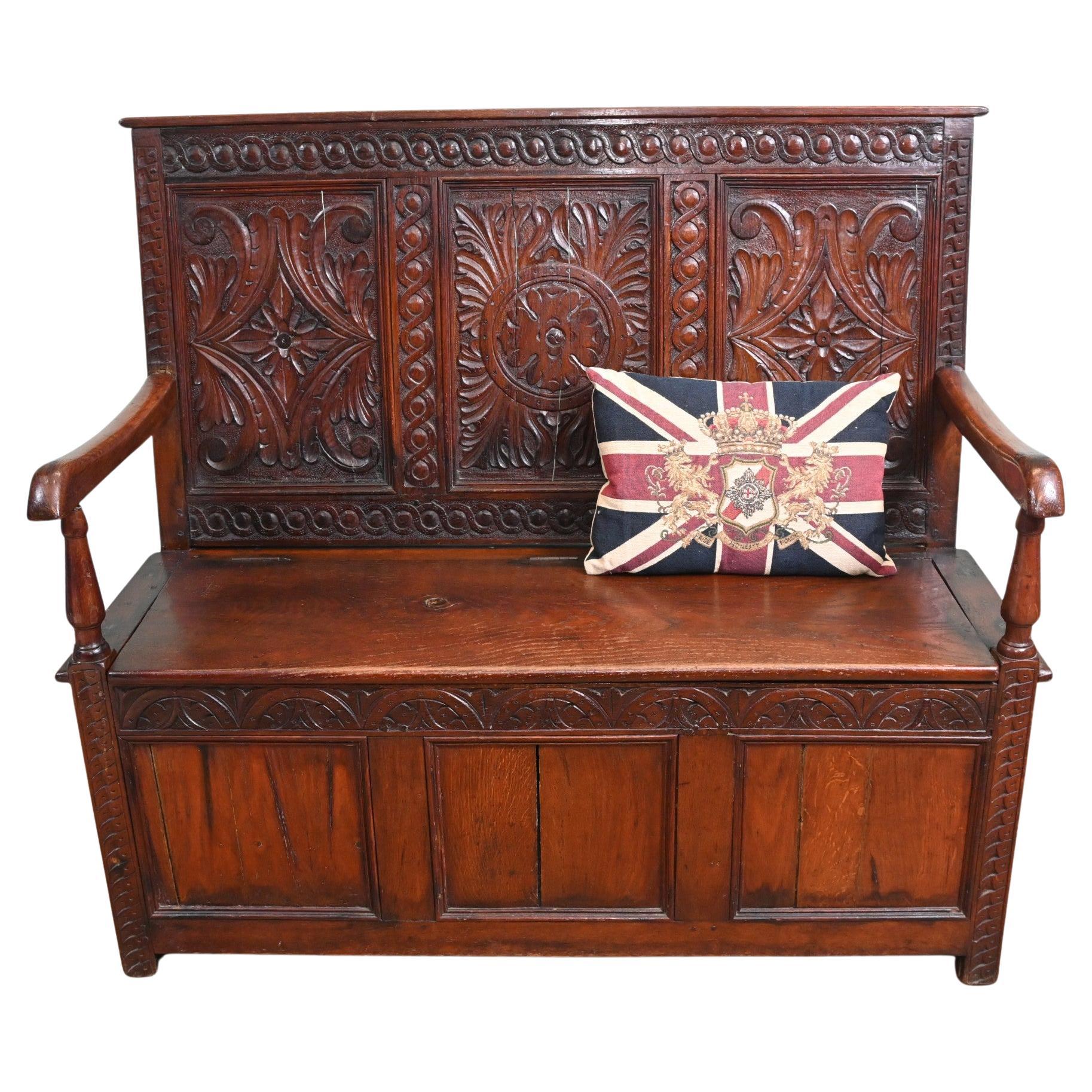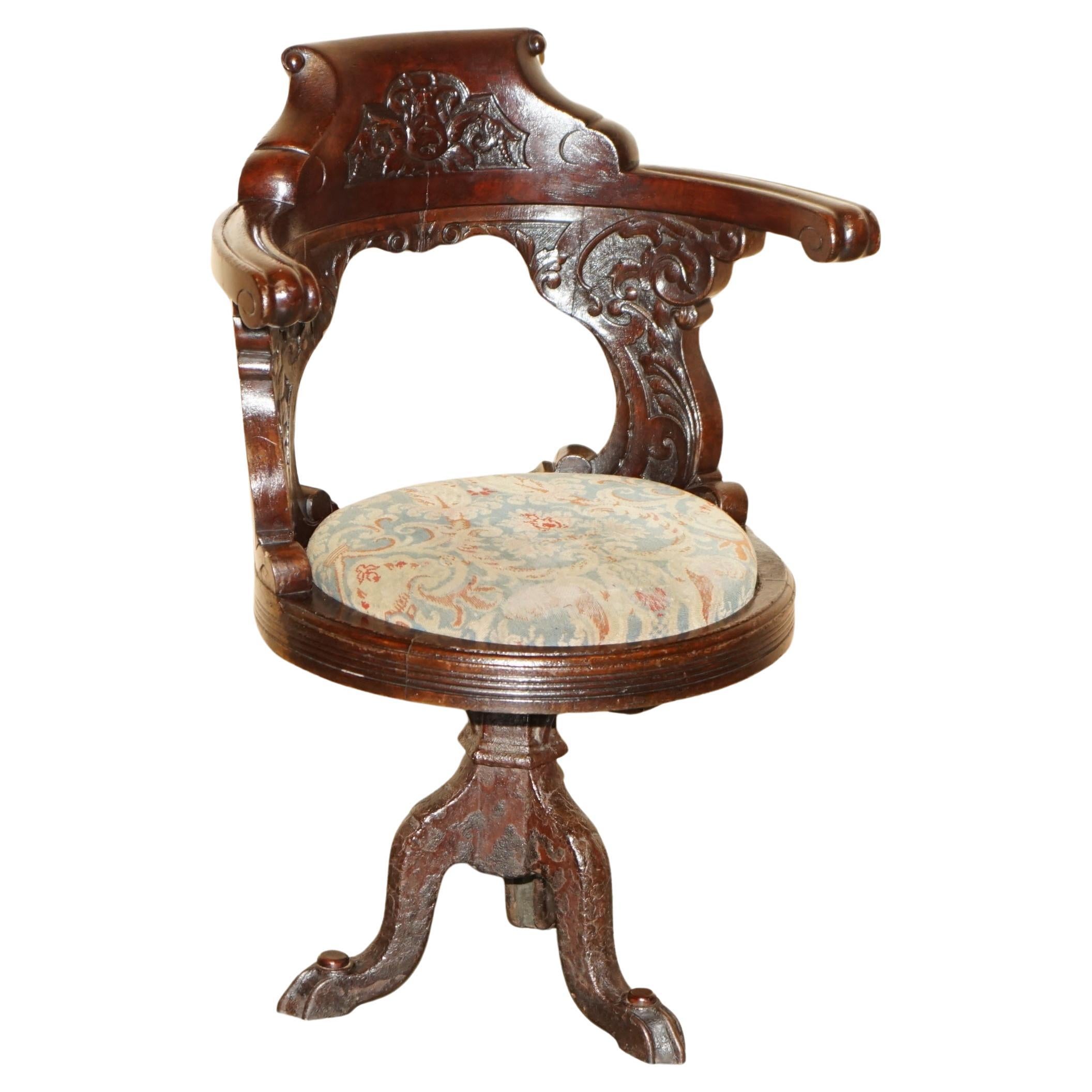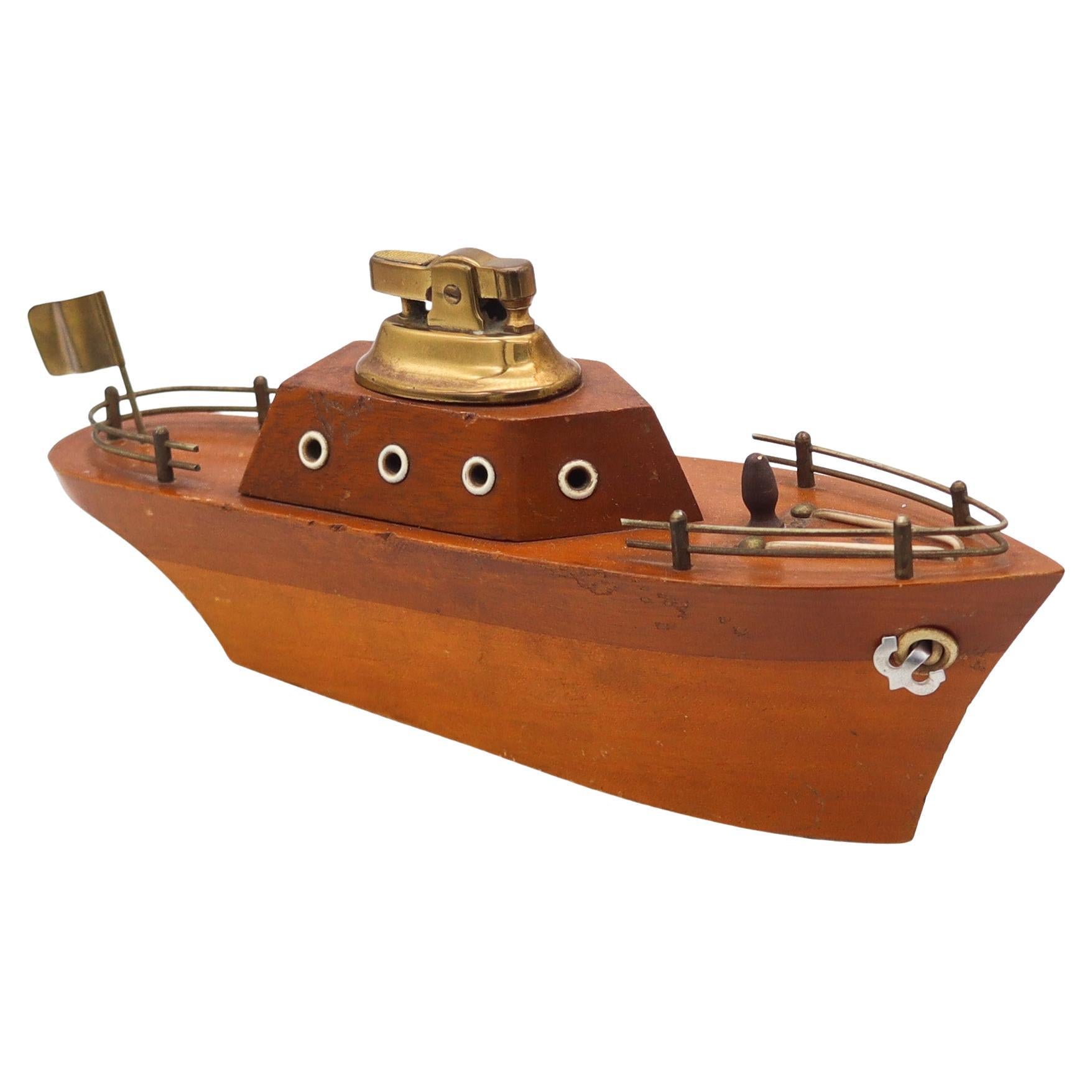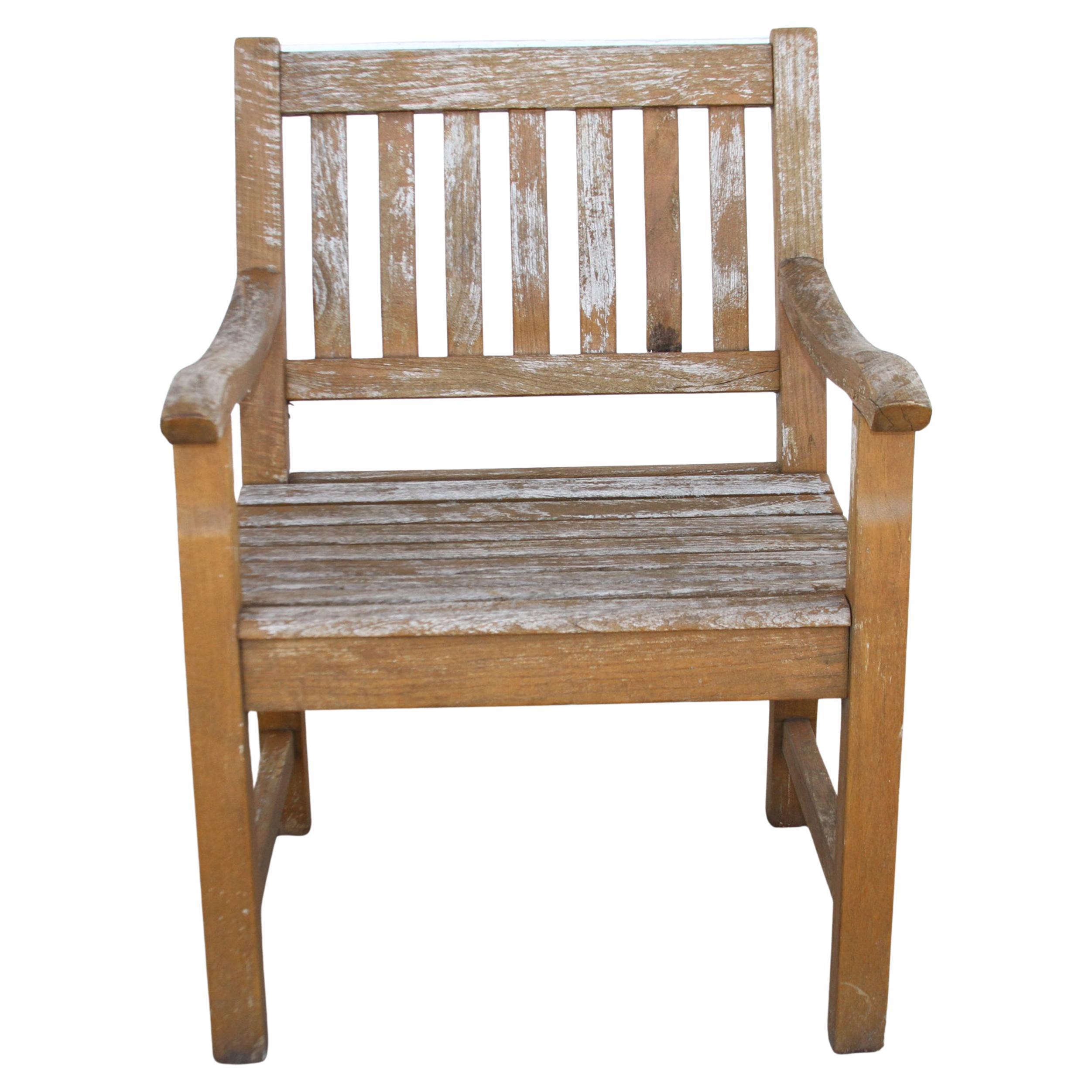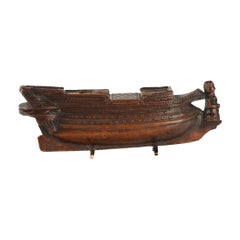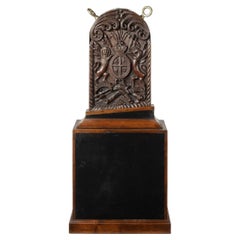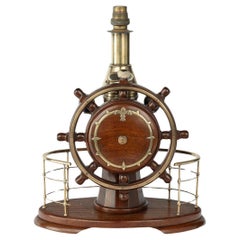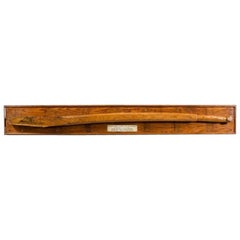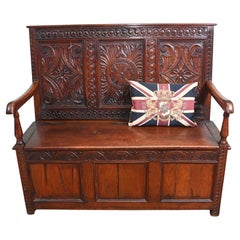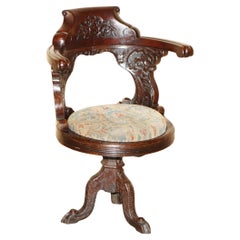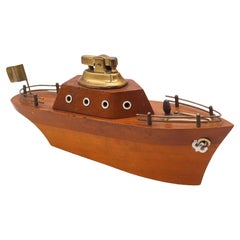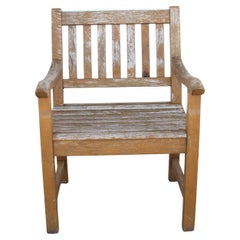Items Similar to Carved and Shaped Teak Seat Back from the Launch of Minesweeper H M S Bluebell
Want more images or videos?
Request additional images or videos from the seller
1 of 6
Carved and Shaped Teak Seat Back from the Launch of Minesweeper H M S Bluebell
$9,926
£7,200
€8,407.77
CA$13,724.46
A$15,067.75
CHF 7,860.88
MX$182,340.74
NOK 98,523.89
SEK 92,835.41
DKK 62,761.76
About the Item
A carved and shaped teak seat back from the launch of minesweeper H M S Bluebell, of shaped rectangular form with a central panel with 3in brass lettering HMS Bluebell, with braced back supports, carved with a confronting pair of sinuous dragons on a ground of cloud scrolls above five wave crests. Anglo Chinese, circa 1916.
Provenance: This hung above the bar of the Royal Naval Club & Royal Albert Yacht Club, Portsmouth.
Footnote: Bluebell was an ‘Acacia’ Class sloop built by Scotts BD Greenock in 1915; in 1916 she intercepted the S.S. Libau disguised as a merchantman smuggling arms to the Irish republic. After the war she served on the China Station based at Hong Kong which is presumably where this attractive Oriental seatback was carved. She was broken up in 1930.
About the Seller
5.0
Recognized Seller
These prestigious sellers are industry leaders and represent the highest echelon for item quality and design.
Gold Seller
Premium sellers maintaining a 4.3+ rating and 24-hour response times
Established in 1982
1stDibs seller since 2013
135 sales on 1stDibs
Typical response time: 2 hours
Associations
LAPADA - The Association of Arts & Antiques Dealers
- ShippingRetrieving quote...Shipping from: Lymington, United Kingdom
- Return Policy
Authenticity Guarantee
In the unlikely event there’s an issue with an item’s authenticity, contact us within 1 year for a full refund. DetailsMoney-Back Guarantee
If your item is not as described, is damaged in transit, or does not arrive, contact us within 7 days for a full refund. Details24-Hour Cancellation
You have a 24-hour grace period in which to reconsider your purchase, with no questions asked.Vetted Professional Sellers
Our world-class sellers must adhere to strict standards for service and quality, maintaining the integrity of our listings.Price-Match Guarantee
If you find that a seller listed the same item for a lower price elsewhere, we’ll match it.Trusted Global Delivery
Our best-in-class carrier network provides specialized shipping options worldwide, including custom delivery.More From This Seller
View AllA carved boxwood prisoner of war battleship snuff box
Located in Lymington, Hampshire
A carved boxwood prisoner of war battleship snuff box. This small snuff box is carved in the form of a 112-gun ship of the line with a removable quarte...
Category
Antique 19th Century English Snuff Boxes and Tobacco Boxes
Materials
Boxwood
Royal Naval Ship’s Elm Companionway Board
Located in Lymington, Hampshire
A Royal Naval ship’s elm companionway board, of rectangular form with an arched top and two sturdy brass rings, naively carved with a crowned coat of arms flanked by a lion and unicorn...
Category
Antique 1860s English Nautical Objects
Materials
Elm
A novelty maritime teak, mahogany and brass table lamp
Located in Lymington, Hampshire
A novelty maritime teak, mahogany and brass table lamp, comprising a steering wheel attached to a binnacle, all within a brass railing, the wheel inlaid with a brass circlet and styl...
Category
Early 20th Century English Table Lamps
Materials
Brass
Oak Yacht Tiller Mounted on Two Deck Planks
Located in Lymington, Hampshire
Oak yacht tiller mounted on two deck planks from the author Arthur Ransome's 1931 Hilliard built yacht 'Nancy Blackett'.
The tiller is from author Arthur Ransome's yacht 'Nancy Bl...
Category
Vintage 1930s English Nautical Objects
Materials
Wood
A Large Edwardian Copper-Bound Teak Log Box
Located in Lymington, Hampshire
A large Edwardian copper-bound teak log box, the square section container with rounded corners, flanged rim and foot and encircled by four copper bands, the ti...
Category
Vintage 1910s English Decorative Boxes
Materials
Teak
Mahogany Miniature Hull Model of a Galleon
Located in Lymington, Hampshire
A mahogany miniature hull model of a galleon, on a mahogany stand, late 19th century,
circa 1890.
Category
Antique 19th Century Models and Miniatures
Materials
Mahogany
You May Also Like
Victorian Oak Settle Hall Kitchen Bench Carved 1840
Located in Potters Bar, GB
You are viewing a gorgeous Victorian oak settle or hall bench
Circa 1840
Finely carved panelled back oak
Lifting lid for storage
Typically used in...
Category
Antique 1840s Victorian Benches
Materials
Oak
ANTIQUE VICTORIAN HAND CARVED HARDWOOD SHIPs CAPTAINS CAST IRON BASE ARMCHAIR
Located in West Sussex, Pulborough
Royal House Antiques
Royal House Antiques is delighted to offer for sale this lovely lightly restored hand carved Mahogany, early Victorian circa 1840 Ships Captains armchair with c...
Category
Antique 1840s English Early Victorian Office Chairs and Desk Chairs
Materials
Iron
ENGLAND 1950 Mid-Century Desk Table Lighter In a Carved Wood Yacht
Located in Miami, FL
A yacht desk lighter made in England
This beautiful desk lighter, was created in England during the mid-century period, back in the 1950. Crafted in the shape of a yacht, carved in ...
Category
Vintage 1950s English Mid-Century Modern Tobacco Accessories
Materials
Brass
Vintage Maritime Heritage Bench Chair
By Another Human
Located in Pasadena, TX
teak maritime heritage chairs 2
Category
21st Century and Contemporary American Other Side Chairs
Materials
Wood
$560 Sale Price
20% Off
Antique Boat's Half Hull Plaque, English, Decorative Maritime Model, Edwardian
Located in Hele, Devon, GB
This is an antique boat's half hull plaque. An English, mahogany and pitch pine decorative maritime model, dating to the Edwardian period, circa 1910.
...
Category
Early 20th Century British Edwardian Nautical Objects
Materials
Wood, Pine
Antique Teak Wood Decorative Chair
Located in New York, NY
Unique hand carved decorative teak chair from th island of Bali. Full dimensions; 27" wide x 19" deep x 16" seat height x 23" back rest high.
This chair was hand made in the spirit ...
Category
Vintage 1950s Primitive Chairs
Materials
Wood, Teak, Reclaimed Wood
More Ways To Browse
Launch Furniture
Boat Blueprint
Ships Log
Used Sextants
Half Hull
The Battle Of Trafalgar
Vintage Brass Ship Porthole
Antique Brass Nautical Compass
Shipyard Furniture
Antique Brass Gimbal
Antique Glass Floats
Antique Wood Pulleys
Boat Oars
Yacht Burgee
Antique Aquarium
Antique Ship Anchor Anchors
Boat Hull
Brass Ships Telegraph
